The trial of Franklin and Lucas lasted three weeks. It was an emotional process, due to the brutal circumstances of Cline’s murder. The jury was forced to examine the grisly weapons used in the crime. They were shown graphic photos of the blood trail left behind when the body was dragged, the hammer which delivered the fatal blows, and the vivid death mask showing the viciousness of the attack. These factors contributed to the jury’s quick decision. Franklin and Lucas were convicted of first-degree murder, and both received life sentences for Cline’s death.
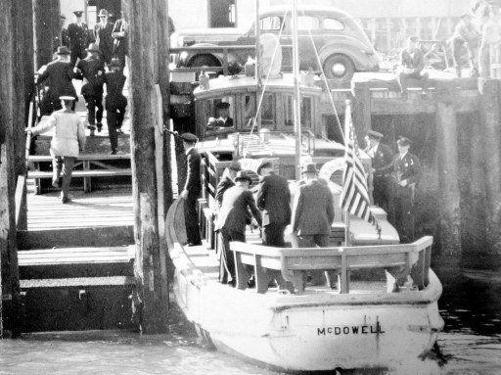
Jimmy Lucas and Rufus Franklin being transferred to court via the prison launch on November 18, 1938.
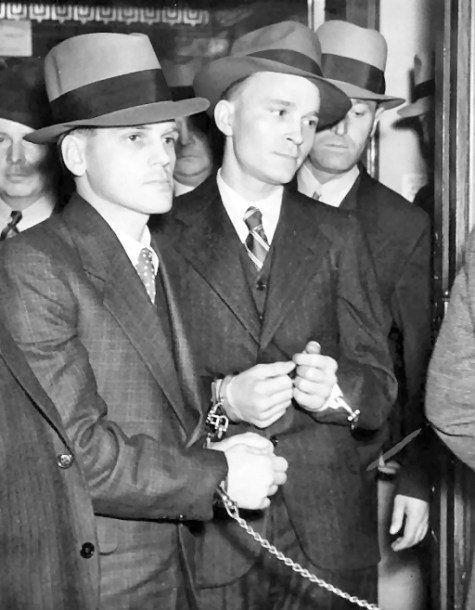
Lucas (left) and Franklin (right) during their highly publicized court appearances. Both inmates were convicted of first-degree murder for their role in Officer Cline’s death.
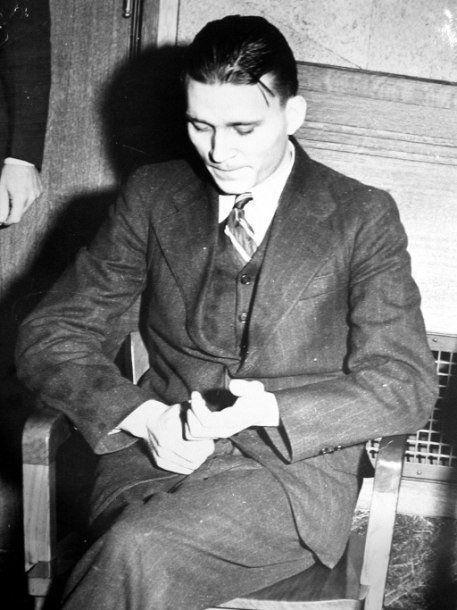
Rufus Franklin in court, awaiting the jury’s verdict.
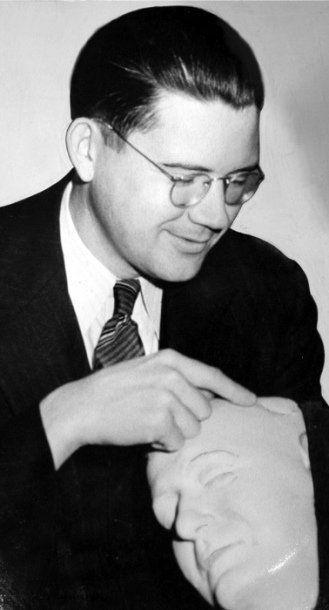
Coroner's Technician Paul Green testifying in the Franklin and Lucas trial. Mr. Green is seen pointing to indentations in the skull, which the prosecution claimed were caused by hammer blows inflicted when Cline resisted the escapees.
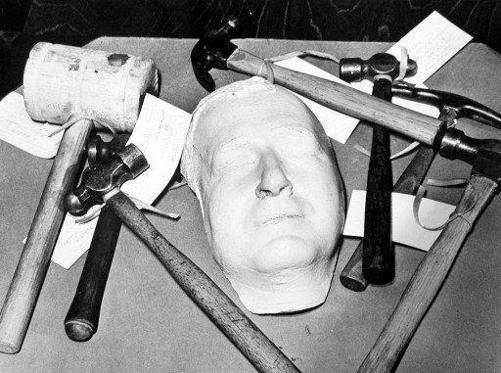
Death mask of slain guard R. C. Cline; the hammers used in his murder; and other tools found in the Model Shop that were used in the escape attempt.
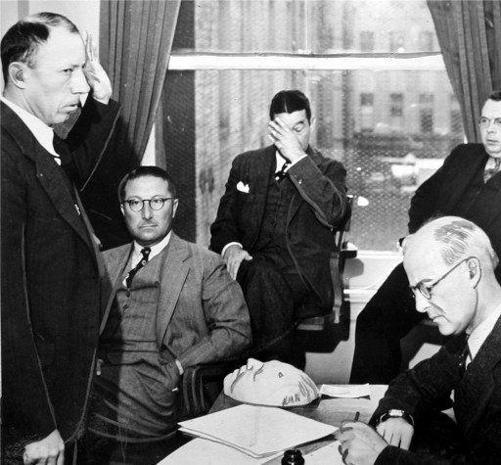
Harold P. Stites is sworn in to testify at a coroner’s inquest on November 4, 1938. On the table is Limerick’s death mask, showing the bullet wound from Stites’s fatal gunshot. Stites himself would later die in the brutally violent “Battle of Alcatraz” of 1946.
Franklin, who had been found with the bloodied hammer used in Cline’s killing, would be sentenced to serve nearly fourteen years in a closed-front solitary confinement cell. He would spend the longest term in solitary of any inmate in the history of Alcatraz. Nevertheless, Franklin was eventually extended a few special privileges. After a long period, he was allowed to keep the door front open and to enjoy a non-restricted diet. His long-term isolation status made him an underground hero among his fellow inmates. Even while being held in the most controlled cell row, he was able to communicate with others in the general population via orderlies, and thus to obtain contraband.
On February 27, 1945, Franklin was allowed time in the recreation yard along with famed inmate Henri Young. In an interrogation of Young while he was under the influence of the drug Sodium Amatol, the prisoner asserted that Whitey Franklin was the “coolest” inmate at Alcatraz. However, Franklin apparently didn’t reciprocate Young’s feelings. During their brief meeting in the yard, the two quickly engaged in conflict, and Franklin produced a kitchen knife and inflicted a minor stab wound to Young’s right shoulder. In a telegram written to Bureau of Prisons Director James Bennett, Warden Johnston suggested that an inmate assigned to the kitchen detail had planted the knife in the yard.
Franklin was released back into the general population in 1952. Because he refused to participate in a culinary strike that lasted from March 18th until April 4th, Franklin was forced back into the Treatment Unit for protection from the hostility of other inmates. He was allowed to continue work, and was permanently returned to the general population on February 12, 1954. Records show that Franklin readjusted easily to the normal prison routine. He increased his reading habits and was noted to take special interest in spiritual and philosophical subjects. Franklin gradually became more trusted by the custodial staff, and was later awarded a privileged position in the prison’s hospital. He was trained as an X-Ray technician and later qualified as a surgical assistant, and was even allowed to prepare and handle the surgical instruments during operations.
After spending twenty years at Alcatraz, Franklin was allowed to transfer back to Leavenworth Penitentiary for a brief ten-month stay, and then to Atlanta Federal Prison to be closer to his family. In a letter written in August of 1958, Franklin boasted about the train ride through New Mexico and Arizona in a Pullman car, and the emotion of seeing life outside of prison for the first time since the murder trial of Royal Cline. He wrote frequently to Warden Madigan and other friends at Alcatraz, keeping them up-to-date on his progress. Madigan seemed to reflect pleasantly on Franklin’s progress, and in a letter dated October 15, 1959, he wrote in part:
It has been a long time since you first came to Alcatraz and you have been through many difficult years and trials. You were a young man when you first came to us and as many young men you possessed the fire that got you into difficulty. You grew out of those years and by application improved your education and work habits. It was not easy for you since there were many pressures brought to bear that made it most difficult for you to conduct yourself as you wished to do. At any rate, you accomplished what you set your mind to do and are now in a position to accomplish still more.
Franklin would spend nearly his entire life behind bars. He was finally paroled on October 29, 1974, and died only a short time later on May 27, 1975 in Dayton, Ohio. He was living with his sister Ruby Farrow at the time of his death, and was said to have enjoyed cooking every morning, and rode the bus into the city everyday to savor his freedom.
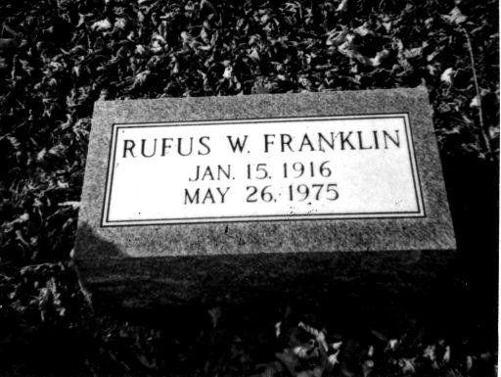
Franklin’s final resting place at the Willow View Cemetery in Dayton, Ohio. He was laid to rest on May 30, 1975.
Correctional Officer Royal Cline tragically had been only thirty-six years old at the time of his death in 1938. His wife Etta remained faithfully at his side in the hospital until he succumbed to his injuries. Fellow correctional officers were profoundly affected by Cline’s death, which was especially sobering to the island’s families since Cline left behind four young children. His death would emphasize the reality that convicts would commit murder in trade for freedom. Warden Johnston would be quoted in the San Francisco Chronicleas stating: “I greatly regret that one who was so attached to his duty should meet such an end.”
ESCAPE ATTEMPT #4
The Barker-Karpis Gang and the Escape Attempt of 1939
Date:
January 13, 1939
Inmates:
Arthur “Doc” Barker
Dale Stamphill
Henri Young
William “Ty” Martin
Rufus McCain
Location:
D Block (Segregation Unit)
It seemed almost predestined that “Doc” Barker would ultimately meet his death as the primary conspirator in the first escape that would demonstrate a weakness in the security of the main cellhouse. Doc’s life as a desperado is the fascinating and bleak story of an American tragedy. A memo from FBI Director J. Edgar Hoover to Attorney General Homer Cummings dated August 15, 1935 states in part: “Arthur ‘Doc’ Barker is beyond doubt among the most dangerous criminals with which this Bureau has had to deal.”